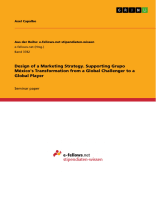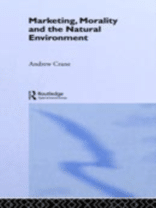Seminar paper from the year 2017 in the subject Business economics – Business Management, Corporate Governance, grade: 84, 0, Sheffield Hallam University, language: English, abstract: In the domain of present-day entrepreneurial activities, the zeitgeist is dominated by the dynamic nature of globalisation reflected in several aspects of global marketing. Under the assumption of free border and culture-crossing transfers of goods and services, the majority of international entities is continuously pressured to solve a variety of issues. For instance, while it is forced to stabilise its supply chain through B2B partnerships, stay informed about the market situation, evaluate the necessity of an adaptation and guarantee its own profit growth, the enterprise is not allowed to neglect the creation and delivery of the value needed by the customer, along with finding the best method to satisfy the stakeholders.
However, one of the greatest uncertainties an established company is permanently confronted with is the question whether it is ignoring the drastic pace of change. The consequence is visible through the loss of its competitiveness, provoked by the entry of new competitors or substitutes outrunning the firm in terms of market share, the customers’ brand loyalty, product quality, the degree of innovation etc. This risk increased especially due to the appearance of global challengers from rapidly developing economies, mainly hailing from Asia and Latin America. Among all these newcomers, Grupo México, a representative of the metals and mining branch, pertains to the group of the most auspicious firms and serves as the central object of investigation for this report.
The first chapter presents a topical overview of GM’s business units, their respective product portfolio and market focus, along with the reasons for their success on domestic, regional and international level and their competitive advantages.
The second chapter continues the exploration of GM’s current state with a critical evaluation of the environmental trends informing the international market sector of the extractive industries. Based on the concepts of PESTLE and SWOT analyses among others, this part unifies both the macroeconomic and the microeconomic business spheres to mirror the strengths, weaknesses, threats and opportunities, which the corporation is facing as a global challenger.
The third and final section contains a set of recommendations implying an exclusive strategic approach designed to underpin GM’s pursuit of becoming an established global player.





Reviews
There are no reviews yet.